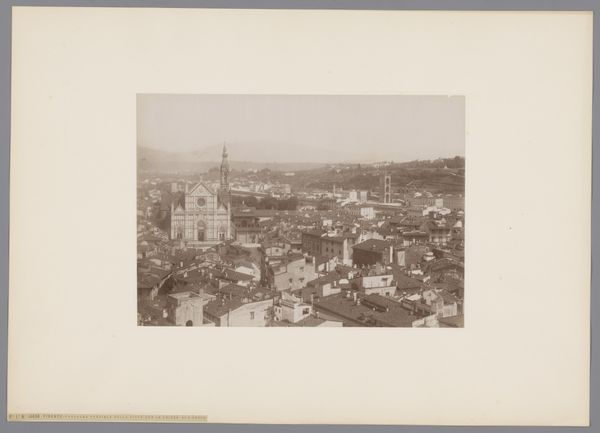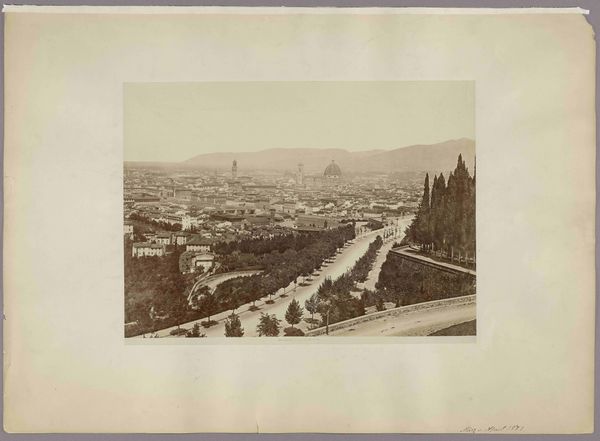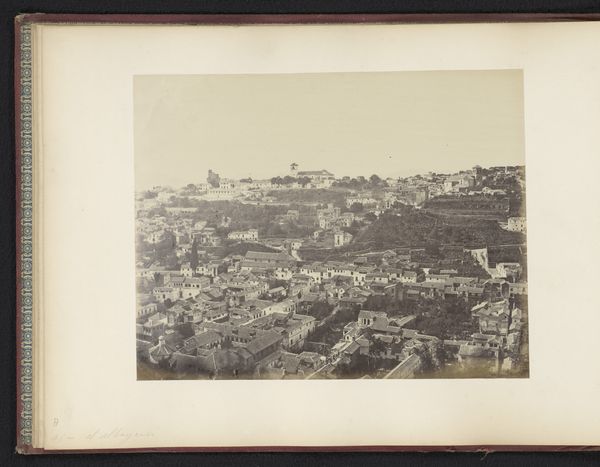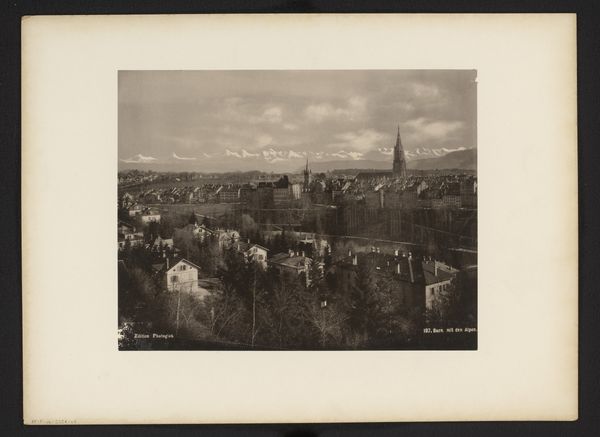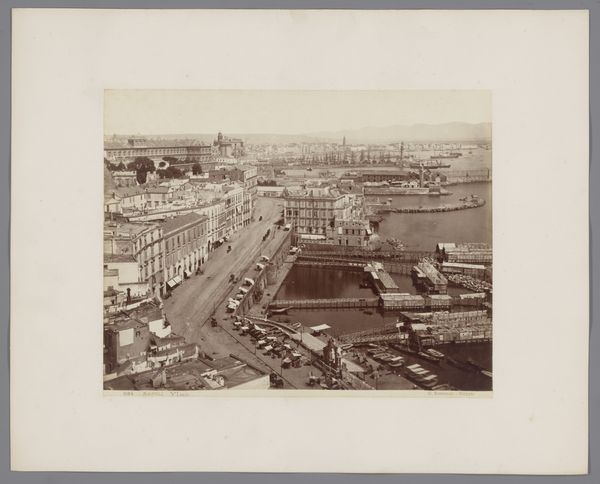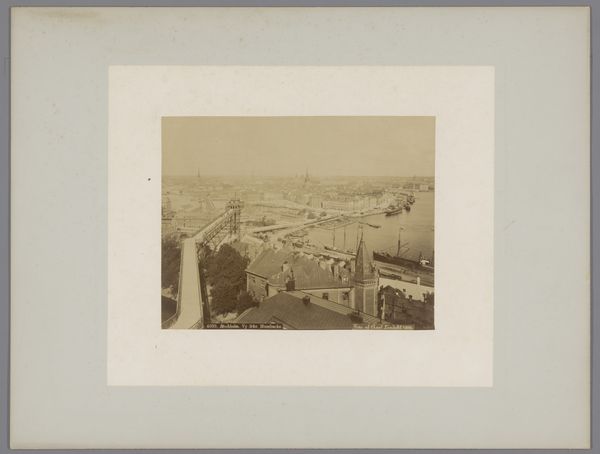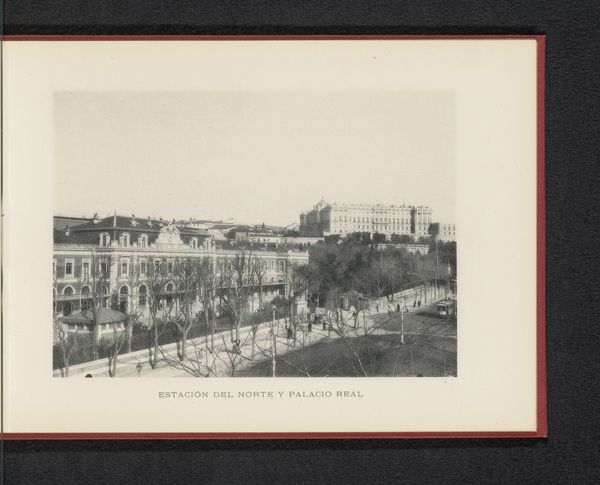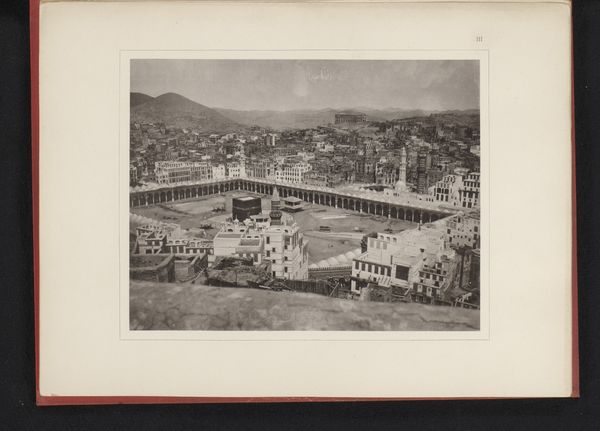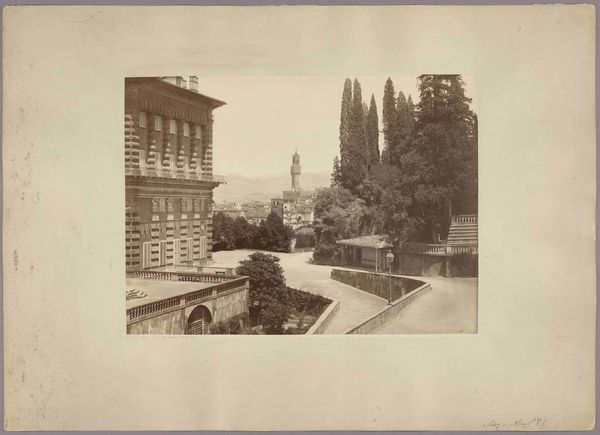
photography, gelatin-silver-print
#
pictorialism
#
landscape
#
photography
#
gelatin-silver-print
#
cityscape
Dimensions: height 211 mm, width 271 mm
Copyright: Rijks Museum: Open Domain
Editor: So, here we have an early gelatin silver print from between 1895 and 1910, "Gezicht op Lausanne," an anonymous photograph in the Rijksmuseum’s collection. The tonality is subtle, giving it an ethereal feel. What strikes me is how the image seems to flatten the urban space, presenting Lausanne as an accumulation of shapes. What do you see in this piece? Curator: What resonates with me are the towers piercing the skyline. They become not just architectural features, but visual assertions of power and faith, hallmarks of civilization as aspiration. Can you discern how this composition invites the viewer’s eye to traverse between these symbolic structures and the domestic spaces beneath? Editor: I see how the bridges create lines that visually lead your eye to the higher ground where these structures stand. But are these visual cues deliberately planned? Curator: Absolutely, and perhaps intuitively, in the photographer's craft. These visual cues contribute to a dialogue between the earthly and the divine, mirrored in the very substance of the image through light and shadow. Each shadow contains as much information and intention as what's brightly visible, suggesting hidden stories or obscured intentions. Does that perspective reshape your reading of the photograph? Editor: It does, it makes me think about how we assign meaning based on what's brought to light and what is obscured. Curator: Indeed, this dance between exposure and concealment is at the very core of understanding symbols – elements, once clearly defined, often intentionally veiled or revealed to amplify the symbol's emotional and cultural impact. This photograph is more than just a pretty view of a cityscape. Editor: Right, I see now, it is a collection of inherited cultural narratives rendered in light. Curator: Exactly. Hopefully, that opens up new avenues for appreciating the layers within visual artifacts.
Comments
No comments
Be the first to comment and join the conversation on the ultimate creative platform.
